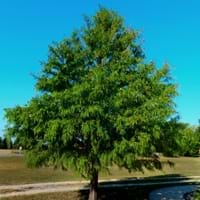Life Span
Perennial
Perennial
Type
Tree
Flowering Plants, Fruits, Trees
Origin
Northeastern United States, Mid-Atlantic United States, Southeastern United States, North-Central United States, Central United States, South-Central United States
Central Asia
Types
Bald cypress is a cypress type
Aceymac apple, Bailey Sweet apple, Dabinett apple, Nehou apple
Number of Varieties
Not Available
Habitat
Humid climates, Warmer regions
Hillside
USDA Hardiness Zone
4-11
5-8
Sunset Zone
2a, 2b, 3a, 3b, 4, 5, 6, 7, 8, 9, 10, 12, 13, 14, 15, 16, 17, 18, 19, 20, 21, 22, 23, 24
A1, A2, A3, 8, 9, 10, 11, 12, 13, 14, 15, 16, 17, 18, 19, 20, 21, 22, 23, 24
Habit
Pyramidal
Oval or Rounded
Flower Color
Green, Bronze, Brown
White
Flower Color Modifier
Bicolor
Not Available
Fruit Color
Green, Brown
Green, Red
Leaf Color in Spring
Green, Lime Green
Dark Green
Leaf Color in Summer
Green
Green
Leaf Color in Fall
Copper, Bronze
Brown, Green, Light Yellow
Leaf Color in Winter
Not Available
Not Available
Plant Season
Spring, Summer, Fall, Winter
Spring
Sunlight
Full Sun, Partial Sun, Partial shade
Full Sun, Partial shade
Type of Soil
Clay, Loam, Sand
Loamy
The pH of Soil
Acidic, Neutral, Alkaline
Neutral
Soil Drainage
Average
Well drained
Bloom Time
Spring
Fall, Summer
Tolerances
Wet Site, Pollution, Soil Compaction
Drought
Where to Plant?
Ground
Ground
How to Plant?
Seedlings
Grafting, Seedlings, Transplanting
Plant Maintenance
Medium
Medium
Watering Requirements
Keep plant submerged in water
Medium
In Summer
Lots of watering
Lots of watering
In Spring
Moderate
Moderate
In Winter
Average Water
Average Water
Soil pH
Acidic, Neutral, Alkaline
Neutral
Soil Type
Clay, Loam, Sand
Loamy
Soil Drainage Capacity
Average
Well drained
Sun Exposure
Full Sun, Partial Sun, Partial shade
Full Sun, Partial shade
Pruning
Prune in late winter, Remove damaged leaves, Remove shoots
Prune when plant is dormant, Remove dead or diseased plant parts
Fertilizers
All-Purpose Liquid Fertilizer
All-Purpose Liquid Fertilizer
Pests and Diseases
Beetles, Blight, Chlorosis, Drought, Mites
Aphids, Canker, Caterpillars, Powdery mildew, Root rot
Plant Tolerance
Drought
Drought
Flowers
Insignificant
Yes
Flower Petal Number
Not Available
Single
Foliage Texture
Fine
Medium
Foliage Sheen
Matte
Matte
Attracts
Not Available
Birds
Allergy
Asthma
Mouth itching, Throat itching
Aesthetic Uses
Beautification
Not Available
Beauty Benefits
Not Available
Not Available
Environmental Uses
Air purification
Air purification
Medicinal Uses
Acne, Skin Disorders, Wounds
Cancer, constipation, Diabetes, Diarrhea, Dysentry, Fever, Heart problems, Tooth ache
Part of Plant Used
Leaves, Stem
Fruits
Other Uses
Application in Handicrafts, Used in construction, Used in Furniture
Used As Food, Wood is used for making furniture
Used As Indoor Plant
No
No
Used As Outdoor Plant
Yes
Yes
Garden Design
Bog Garden, Feature Plant, Screening / Wind Break, Shade Trees, Street Trees
Fruit / Fruit Tree, Shade Trees, Showy Tree
Botanical Name
TAXODIUM distichum
Malus domestica
Common Name
Bald Cypress
Apple Tree
In Hindi
bald cypress
सेब का वृक्ष
In German
kahlen Zypresse
Apfelbaum
In French
cyprès chauve
Pommier
In Spanish
ciprés calvo
Manzano
In Greek
φαλακρό κυπαρίσσι
μηλιά
In Portuguese
calvo cipreste
Macieira
In Polish
Łysy drzewa cyprysowego
jabłoń
In Latin
dilata calvitium cypressus
Arbore
Phylum
Coniferophyta
Magnoliophyta
Class
Pinopsida
Magnoliopsida
Family
Cupressaceae
Rosaceae
Clade
Not Available
Angiosperms, Eudicots, Rosids
Tribe
Not Available
Not Available
Subfamily
Not Available
Not Available
Number of Species
Not Available
Not Available
Season and Care of Bald Cypress and Apple Tree
Season and care of Bald Cypress and Apple Tree is important to know. While considering everything about Bald Cypress and Apple Tree Care, growing season is an essential factor. Bald Cypress season is Spring, Summer, Fall and Winter and Apple Tree season is Spring, Summer, Fall and Winter. The type of soil for Bald Cypress is Clay, Loam, Sand and for Apple Tree is Loamy while the PH of soil for Bald Cypress is Acidic, Neutral, Alkaline and for Apple Tree is Neutral.
Bald Cypress and Apple Tree Physical Information
Bald Cypress and Apple Tree physical information is very important for comparison. Bald Cypress height is 2,130.00 cm and width 610.00 cm whereas Apple Tree height is 25.00 cm and width 20.00 cm. The color specification of Bald Cypress and Apple Tree are as follows:
Bald Cypress flower color: Green, Bronze and Brown
Bald Cypress leaf color: Green and Lime Green
Apple Tree flower color: White
- Apple Tree leaf color: Dark Green
Care of Bald Cypress and Apple Tree
Care of Bald Cypress and Apple Tree include pruning, fertilizers, watering etc. Bald Cypress pruning is done Prune in late winter, Remove damaged leaves and Remove shoots and Apple Tree pruning is done Prune when plant is dormant and Remove dead or diseased plant parts. In summer Bald Cypress needs Lots of watering and in winter, it needs Average Water. Whereas, in summer Apple Tree needs Lots of watering and in winter, it needs Average Water.





